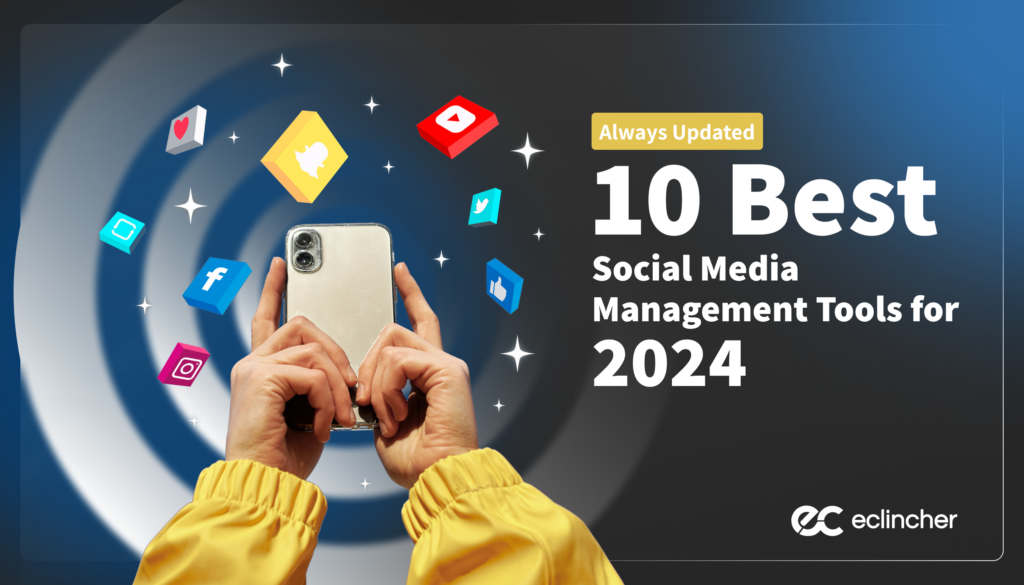Hashtags for business have become a normal part of daily life for both marketers and consumers. In marketing, hashtags can be used as a powerful tool to attract an audience and connect with customers.
Unfortunately, there are a lot of high hopes and expectations surrounding success with hashtagging. However, it takes strategic planning to avoid wasted resources or a PR blunder.
Here are some practical guidelines to help your business understand the differences between expectations versus reality in hashtags.
RELATED: Your Complete Guide to Instagram Hashtags
How do Hashtags Work?
Hashtags are a form of metadata that works with social media algorithms to identify and deliver relevant content to users. In other words, hashtags work similarly to keywords and SEO on Google. By researching and using the right hashtags for your branding goals, you can boost traffic to your page and improve engagement with your audience.
Marketers have different reasons for using hashtags that might include an increase in engagement, new Instagram followers, or new customers. Businesses use hashtags in their feed and on their Instagram stories to get discovered by new audiences on Instagram, build their community, find user generated content, research audiences, and numerous other reasons. For social media managers that need help finding relevant hashtags in their space, there are social media productivity tools out there that help you with hashtag monitoring, performance, discovery, and popularity. You can also save hashtags for future use.
Consider what happens behind the scenes when you post on Instagram. With millions of other people posting simultaneously, it can be hard to stand out in the crowd. Hashtags tag your post to show it to people interested in the type of content you share. The better your hashtag strategy, the more likely your ideal audience will see your content.
RELATED: The Advanced Guide to Using Instagram for Business in 2020
The Reality of Using Hashtags for Business
While hashtags might seem like the wunderkind of social media, they don’t always work out for the best. There are numerous ways hashtags can harm your reach and engagement.
Shadowbanning
Shadowbanning is one of the major pitfalls of choosing the wrong hashtags. A shadowban is a subtle way of censoring content so that it doesn’t show up in user feeds or connect with any hashtags that have been used. Active followers may still see your content, but it will essentially be downvoted within the algorithm.
How can hashtags cause a shadowban? If you’re using a hashtag that’s been flagged, your content could be shadowbanned— For example, during the height of the Coronavirus pandemic, Pinterest and Instagram shadowbanned hashtags related to the illness. The logic behind this decision was to help prevent the spread of misinformation, which was common during the first few weeks. However, it created challenges for many influencers and businesses using the tag for outreach and sharing in the experience.
Shadowbans also take place if Instagram has reason to believe that you’re using bots or paid following programs, which violates their terms. For example, using the same hashtags every time without any variation could get you banned.
Reliance on Hashtags
Another common issue with the prevalence of hashtags in social media marketing is that some businesses rely too much on them. Rather than devoting time and resources to developing engaging content, marketers mistakenly hone in on hashtag use.
While researching hashtags plays a pivotal role in capitalizing on this opportunity, it isn’t the be-all-end-all of social media marketing. If your business doesn’t post high-quality content, your audience will scroll past without pausing to engage.
It’s not enough to have your content seen; it has to offer value to captivate your audience.
Playing the Numbers Game
Another powerful expectation versus reality moment for marketers is understanding the numbers when selecting hashtags. Many businesses mistakenly gravitate toward hashtags with millions of posts, thinking that they’ll reach millions of potential followers.
However, when you’re competing with millions of posts— especially when those accounts have more followers and engagement— you’re fighting a losing battle. It’s more likely that your content will get overshadowed in the feed, rather than reaching anybody.
Marketers should develop a blend of high-traffic and lower-traffic hashtags for each post, such as adding five hashtags with millions of posts and twenty with under 100,000.
Creating an Effective Hashtag Strategy
To create an effective hashtag strategy, you must know the various types of hashtags to use and how to use them effectively. Here are some helpful tips for navigating hashtags.
Types of Hashtags to Use
Hashtags are subcategorized into different subsets, depending on the content they depict. Some of the most common hashtag types include:
- Product Hashtags – these are related to the product or service you’re offering, such as #gymattire or #financialadvisor.
- Brand Hashtags – these are developed as an identifier for your business, such as Gloveworx’s #BecomeUnstoppable or GRRRL Clothing’s #grrrlarmy
- Campaign Hashtags – these track specific campaigns, such as Coca-Cola’s #ShareACoke and Oreo’s #OreoHorrorStories.
- Trending and Seasonal Hashtags – these are hashtags that are trending with challenges or topical content and seasonal hashtags surrounding holidays and events— for example, daily selfie posts with selfie hashtags or content about New Years’ Eve.
- Niche and Relevant Hashtags – these are relevant to what your audience is interested in, both in general and specific to your industry niche.
While you may use a few recurring hashtags in your posts, it’s important to mix it up and create a varied blend. Remember, business hashtags are very effective when done right!
Use Social Listening
There are numerous tools and guides to help you choose the right hashtags. While these apps can be beneficial, it’s also wise to use social listening when developing a hashtag strategy.
Social listening is the act of monitoring your audience to see what they say about you and what other interests they may have that are relevant to your business. For example, a skincare company might see that many followers use #selfcare when posting about their face masks. This knowledge would allow the company to cater their content and resonate using hashtags.
Social listening is also helpful for looking at similar businesses and accounts you want to emulate. See what works well for them and use that as inspiration for your hashtag strategy.
RELATED: Using a Hashtag Strategy to Increase Reach and Engagement
Don’ts of Hashtagging
While having a strategy in place is important, it’s also essential to know what not to do when using hashtags. Here are some key takeaways to keep in mind.
Don’t Overcomplicate It
When developing a brand or campaign hashtag, keep it simple. The longer and more complicated the hashtag is, the less likely it will go viral. Furthermore, your followers will be less likely to use it, making social listening and user-generated content curation a struggle. Try to keep your hashtag under five words with less than 20 characters.
Don’t Hashtag Every Word
#don’t #hashtag #every #word
Instead, focus on word combinations that help clarify the content you’re posting. While it’s normal to have a few single-word hashtags in your blend, the majority should be a combination to help specify your relevance within the algorithm.
Don’t Litter Your Content with Hashtags
Consider adding a few hashtags within the body of your caption to help show readers what you’re talking about as they scroll by. Doing so can help boost engagement by encouraging them to slow down and take note.
However, hashtags shouldn’t be the focal point of your content. Add the rest of your hashtags at the bottom of your post, leaving space in between to keep things looking organized.
On Instagram, consider adding hashtags to the first comment rather than within the body. While there’s only a minimal difference in how this affects the algorithm, it’s often worth it to make the caption look cleaner.
Don’t Post Without Looking Closely
Before you commit to a brand or campaign hashtag, tap into your inner word puzzle expert. Some words, when pushed together, can read differently without punctuation and spacing. Consider the infamous blunder with Susan Boyle’s album release, using a hashtag for “Susan Album Party.” While it looks clear when written out, it becomes #susanalbumparty in hashtag form.
It’s also imperative to research trending hashtags to determine their origin. DiGiorno Pizza faced global backlash for using #WhyIStayed to advertise their at-home pizza because it was trending. The hashtag pertained to domestic violence and encouraged survivors to share their experiences. While DiGiorno later apologized and confessed that they hadn’t researched the hashtag, the damage had already been done.
Hashtags for Business: Plan, Post, Profit
Hashtags are a powerful tool for driving traffic and connecting with an audience. Marketers should invest time in researching relevant hashtags to use in combination with high-quality content before hitting post. For more tips on the different social media platforms, you can check out our blog here. If you’re looking for a better way to manage your social media strategy, sign up for a group demo of eclincher or start a free 14-day trial. We are happy to help!






